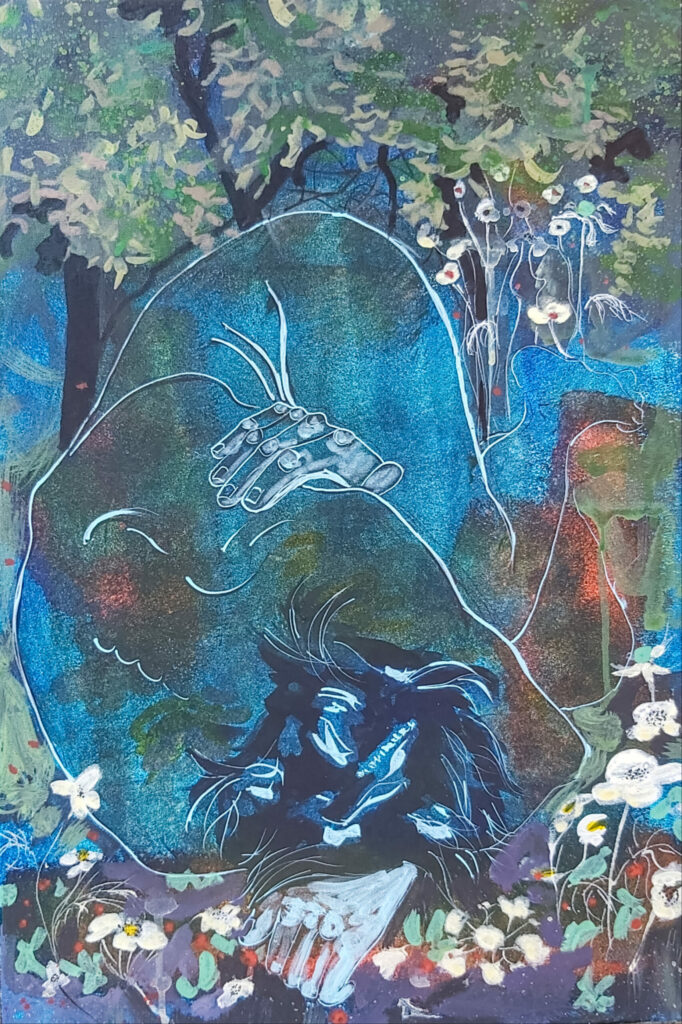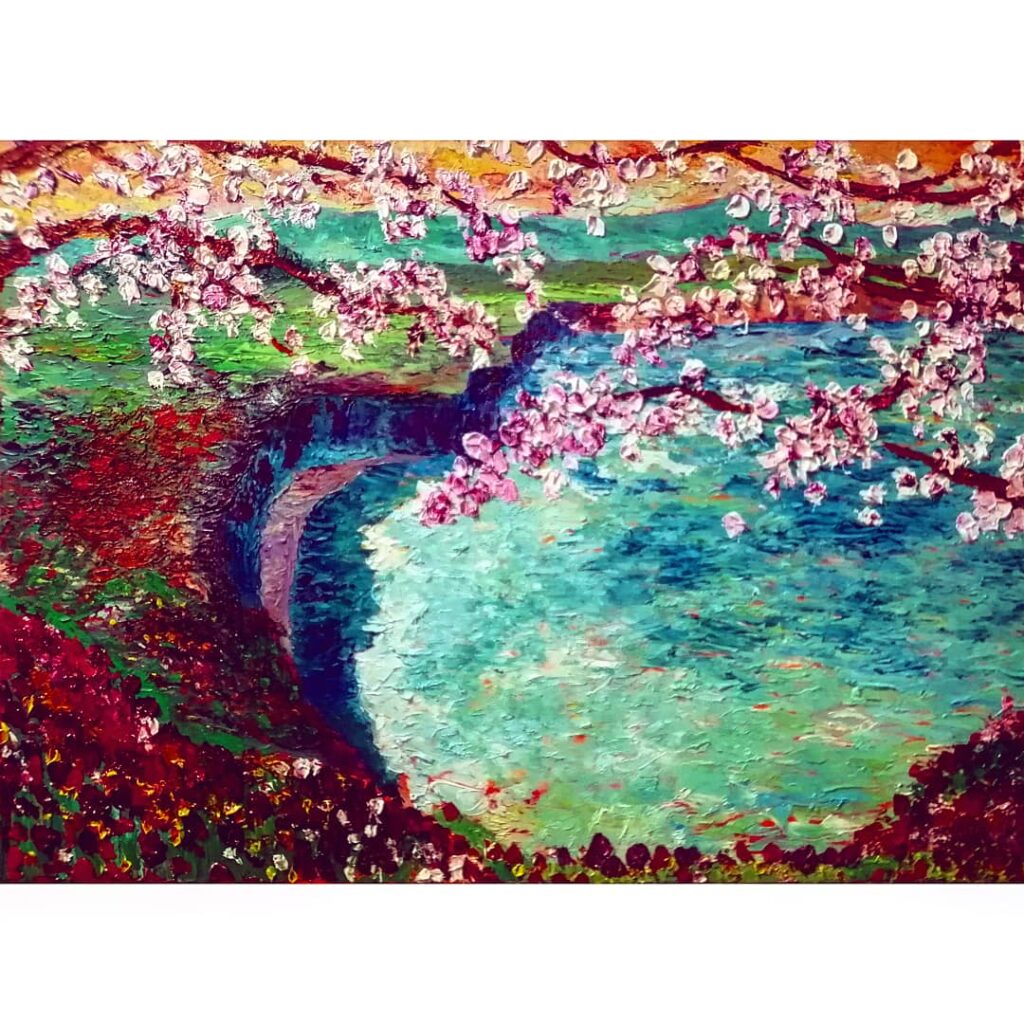Hiding Behind a Tree Drawing
The tree and its many forms is one of the oldest friends of art.
For generations, trees have been used as potent symbols of life, knowledge, and sacredness in paintings and other artworks.
This article is meant as an homage to the role of trees in art, as we take an arboreal exploration as to the figure's prominent role in art history.
Trees are life-giving and full of wonder. It's no wonder artists have been obsessed with them for generations!
Let's enter the canopy.
Emphasis on Trees in Art

https://gallerima.com/product/sadness/
Without trees turning sunlight into oxygen, humans would not be able to exist.
Because trees are the lifeblood of human health and wellness, artists have cultivated a love affair with them to deliver an abundance of fascinating artworks.
There are almost limitless opportunities for depictions of trees in art, with the figures stretching their branches through landscapes, abstract works, and much more.
Trees are brought to the canvas in many different stages, mostly notably:
- Corpses (Bare): Representation of emptiness, nakedness, and longing.
- With Roots: Representation of groundedness, firmness, assuredness.
- Forest Settings: Representation of abundance, life, hope.
- Singularly: Representation of loneliness, independence, resilience.
Because trees appear to us so regularly and with many variations in our daily lives, artists use them to communicate feelings onto the canvas.
Trees in art are especially prominent in impressionist works, where artists can explore the essence of these mighty life-giving beings.
You'd be hard pressed to walk through a museum or art gallery without encountering at least one tree in the mix. Trees in art are almost as common as animals, which is no small feat!
Trees in Art History
Throughout art history, trees have been utilized as an explicit symbol of growth, seasonal death, and revival.
Arboreal depictions play an especially important role in mythology, folklore and culture, as exemplified by totems such as the Tree of Life, the Sacred Tree, and the Tree of Knowledge.
Trees are inherently associated with the creation of the universe, with the roots serving as the underworld, the trunk serving as the earth, and the crown / foliage serving as the sky.
And trees haven't been just relegated to the visual arts.
Many folklore characters in literature and tribal stories reach the sky by climbing the limbs of trees, allowing for those characters to discover enlightenment and understanding.
Certain types of trees in art history have played especially important roles:
- The Olive Tree: A favorite of Vincent Van Gogh and surrealist painter Salvador Dali, olive trees usually embody symbols of peace and the Christian savior of Jesus Christ. Dali repurposed the olive in his legendary painting The Persistence of Memory to embody old wisdom, perhaps now forgotten.
- Fig / Sycamore Tree: A recurring motif that symbolizes lust and fertility. Adam and Eve are often depicted with a fig tree, indicating the indulgence and over-abundance craved by humanity.
- The Myrtle Tree: A tree associated with the goddess Venus which was extremely popular during the Renaissance period in Europe. Usually used as a symbol of love, the myrtle appears again and again in artworks spanning generations.
- The Juniper Tree: A symbol for virtue and chastity. Leonardo da Vinci commonly explored the juniper tree, and it was also common among Renaissance painters who were highly concerned with ideas of sexual exploration.
- The Pine Tree: A common symbol of death. Any plant that grows next to pine trees tend to die out very soon, which makes for an obvious correlation between art subjects placed in close proximity to the dreadfully fated pine tree.
Trees in Contemporary Art

https://gallerima.com/product/spring-inside-me/
In the contemporary art world, trees are still called upon as symbols to explore the many feelings that we experience in the modern age.
Artists use trees to explore and reinvent folklore and mythology to make a pertinent comment on our connection or disconnection with the natural world as the past — using them as a pinnacle symbol for the art world.
Looking to explore contemporary artworks?
Here at Gallerima, we are dedicated to cultivating the best online art marketplace for both buyers and artists to exchange stunning contemporary works.
Whatever you're looking for — whether it be paintings, photographs, or prints — we've got you covered.
Browse our selection today!
And when you're finished, make sure to take a moment to appreciate that tree outside of your window. It has inspired artists to produce incredible works for generations, and it gives you life!
Source: https://gallerima.com/magazine/the-hidden-meaning-of-trees-in-art-2-will-shock-you/
0 Response to "Hiding Behind a Tree Drawing"
Post a Comment